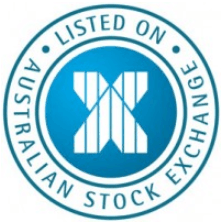Chris Weston, Chief Market Strategist at IG Markets
Most in the market would say very little was learnt from Janet Yellen’s testimony to Congress yesterday; but I personally sit in the camp that we actually heard a slight hawkish turn from the Fed chairman.
Perhaps it’s because I am a growing believer that the Fed should raise rates in Q1 and start a normalisation process in its policy setting. Late Friday the Wall Street Journal produced an article around a heightened debate occurring at the Fed about moving the fed funds rate given the improvement in the labour market.
If you look at the Janet Yellen’s comments that the labor market ‘continues to improve more quickly than anticipated’ and if you add in the view that rate hikes would occur ‘sooner and more rapid’ than expected, there are signs Q1 could be a realistic date.
As St Louis Fed President James Bullard said in late June, he sees the unemployment rate declining faster than many are expecting. This is the risk for the doves, and the trend of above 200,000 monthly payrolls could have the positive feedback loop that it transcends more quickly into real wages, which of course is the key trigger for the Fed to look to target higher short-term rates and alter the dynamics of global markets.
The fact that the Fed are now focusing on specific areas of the stock market also throws weight to the view that they are thinking of financial stability and areas that could really be affected when rates move.
US earnings are also trickling in, as they are in Japan and soon in Europe and while it’s probably a touch early to talk about the level of beats and misses, it has to be seen as a positive that the banks are beating expectations. Financials were the supposed to be the sector that disappoints, and while trading revenues have been lacklustre, aggregate (well, from the six financial companies who have reported) earnings per share have actually increased 2.8% so far.
Intel should trade well today, given its post-market price action, while Yahoo should see sellers despite returning cash to shareholders. Yahoo continuing the recent thematic of shareholders wanting a return on their equity, while companies look for a return of their equity.
Asia has seen fairly lacklustre trade as well, although there has been better volatility in the forex space, notably the NZD after kiwi CPI missed the streets forecasts by twenty basis points. The swaps market was pricing in a 90% chance of the RBNZ hiking in July, however those odds have fallen to 80% and could feasibly fall to the 50% in the short-term, although I still see a July rate hike from the RBNZ. AUD/USD has also seen better sellers today and a close tonight through the June 18 low of 0.9323 (and 61.8% retracement of the May to July) would see traders eyeing the 92c level.
Certainly the moves lower today in the AUD were questionable, although a similar move was seen in the China H-shares. China’s data dump was strong, with Q2 GDP recording the first quarterly growth in three quarters. Industrial production improved by 40 basis points to 9.2% and follows credible leading indicators such as June electrical consumption (+5.9%) and June railway freight traffic (-1.3% in June vs -1.6% in May). We also saw a nice increase in total social financing yesterday as well, which is another key input into China’s economic growth.
Perhaps the slight miss to retail sales has thrown some doubt behind the smooth handover to domestic consumption within the Chinese economic model. While there will no doubt be a few who may economic traction from the short-term pro-growth measures imposed over the last few months and feel that the prospects of a liquidity boost through a reserve ratio requirement cut, or even an interest rate cut (to reduce firms financing costs) diminishing. Still, it has to be said that once again we are shown that if China wants to boost growth there is no economy in the world that reacts as efficiently to varied stimulus than this economy. However the measures do absolutely nothing to the longer-term requirement of deleveraging and it seems that it is one giant step forward and two small steps back for China’s economy, whereby after a bout of growth concerns, stimulus takes them right back to where they were.
Interestingly all the buying in mining stocks in Australia took place in early trade and prior to China’s data dump. Copper, iron ore and rebar futures and most of the resource space are either flat or lower since China’s data dump.
Our European equity calls are modestly higher, but there is still plenty of event risk for traders. In European trade the market will focus firmly on UK employment with the employment rate expected to tick down to 6.5% – the lowest level since January 2009. Sterling is looking to print a higher high and resume the uptrend, with the bulls looking for a daily close through the July 4 high of 1.7179.
In the US Janet Yellen testifies to the House, although little is expected and traders will focus more on US industrial production, which is expected to increase 0.3%. For currency traders the Canadian central bank meeting will be interesting given both headline and core inflation has been on the rise. Given the moves on late in the CAD it seems traders are expecting the Bank of Canada governor Poloz to follow Janet Yellen’s lead and suggest the move higher in prices is ‘noise’. USD/CAD longs are preferred, cutting back on a close below the June 30 high of 1.0696.
